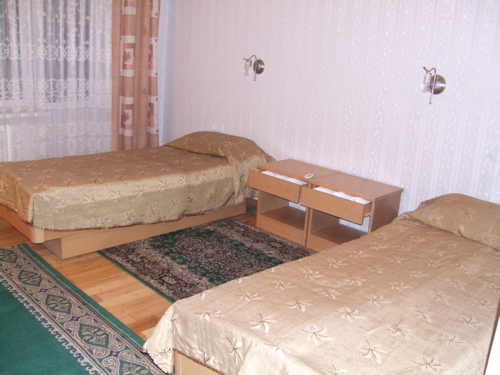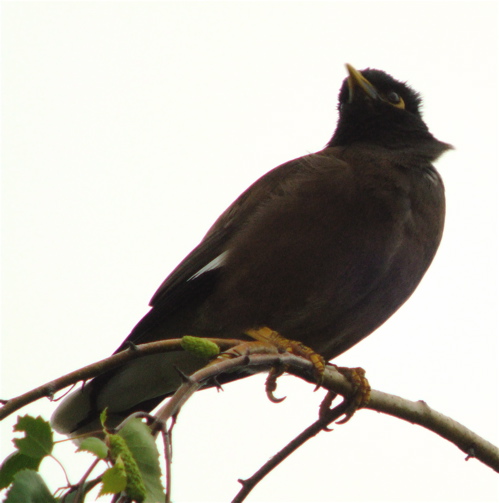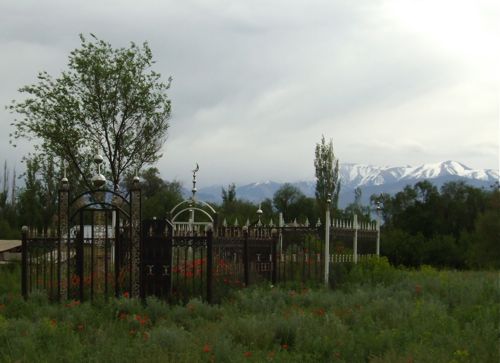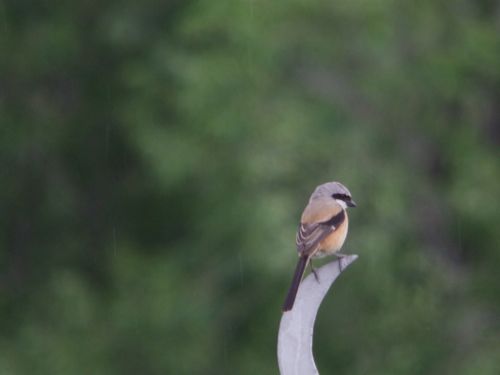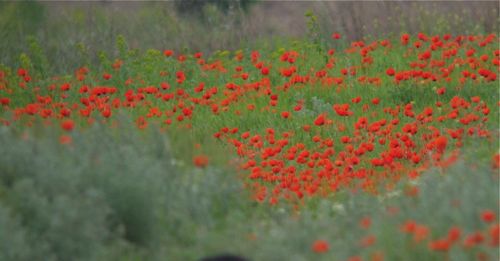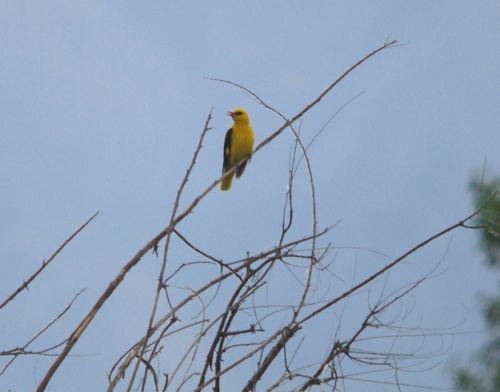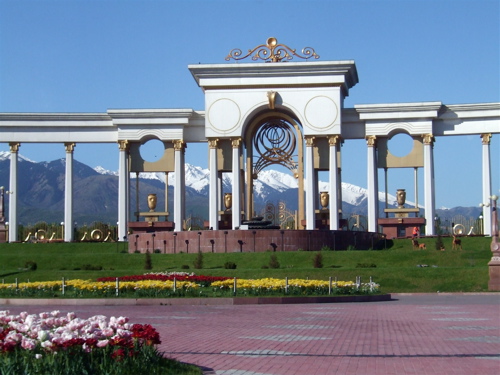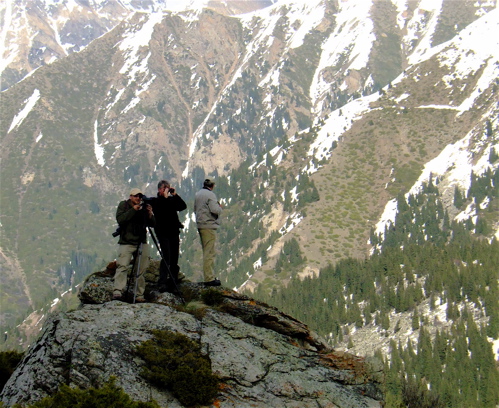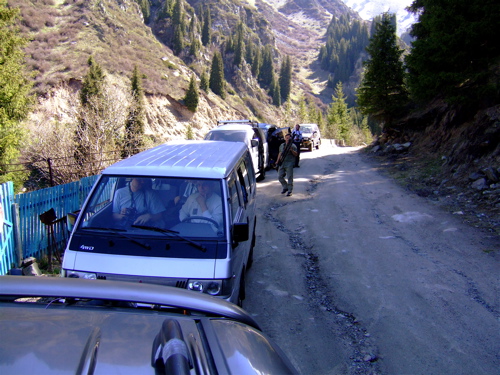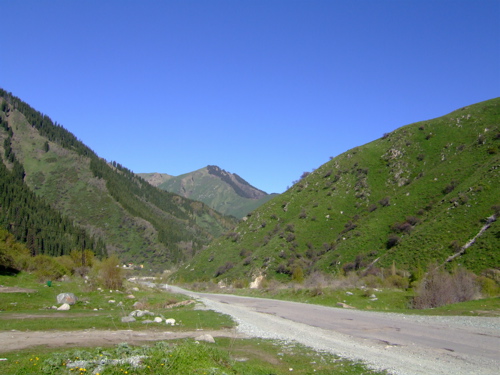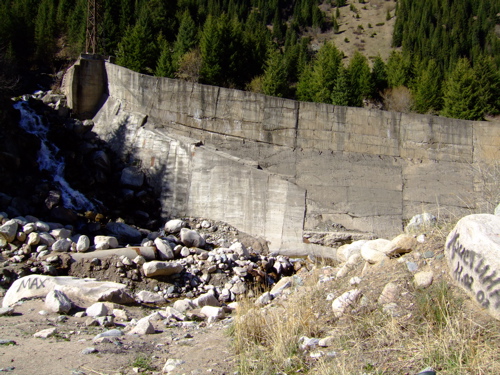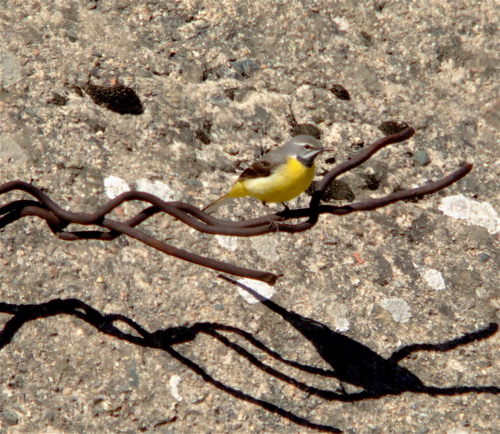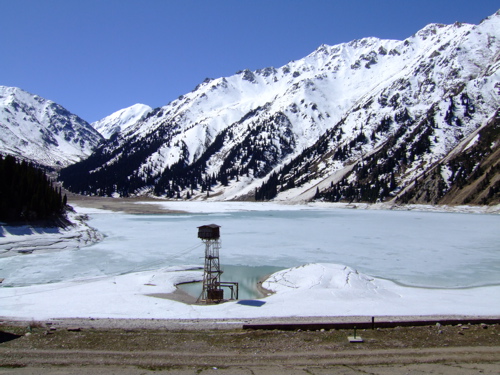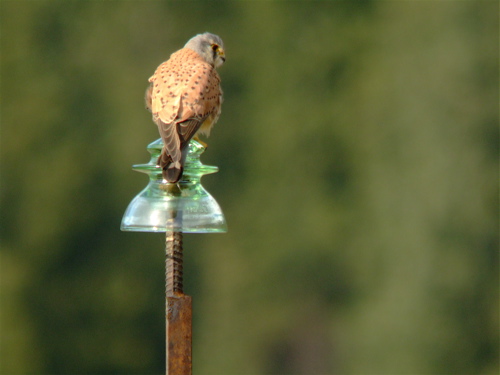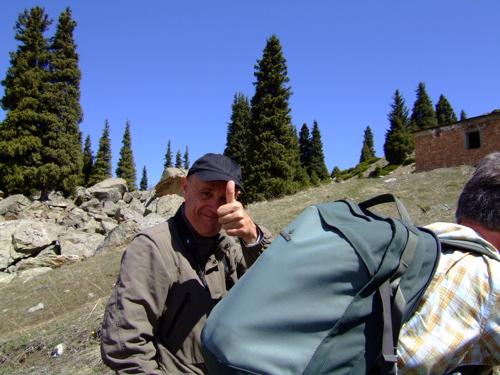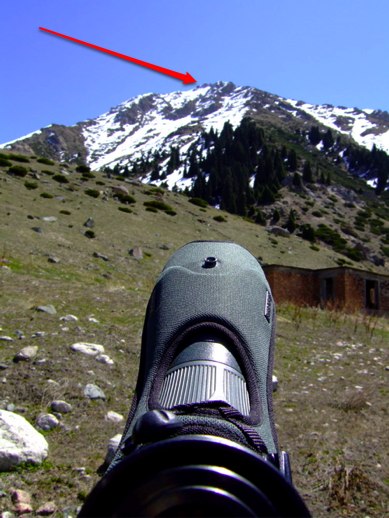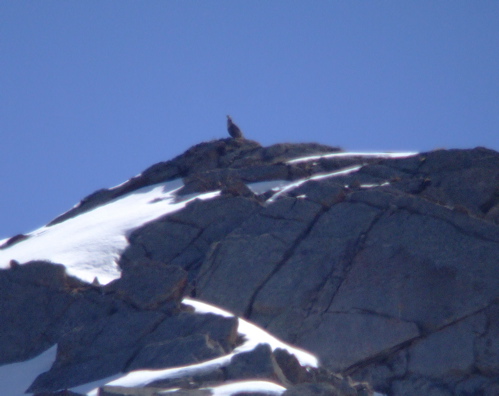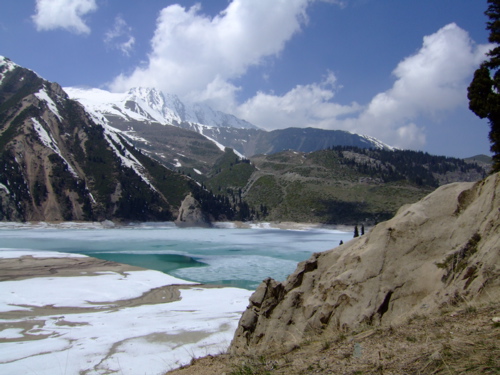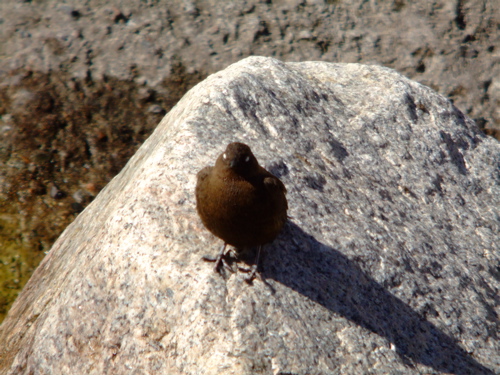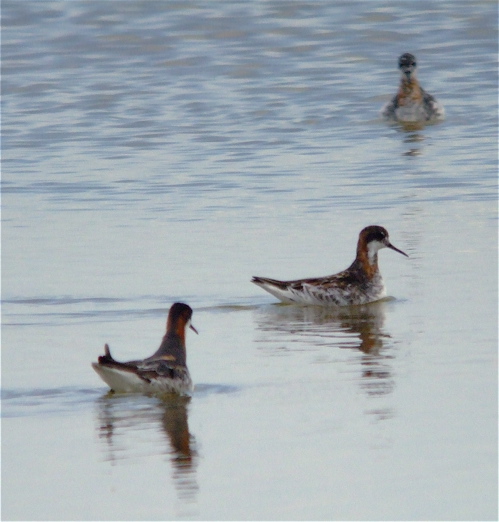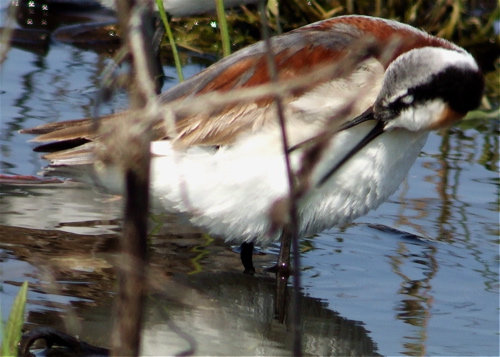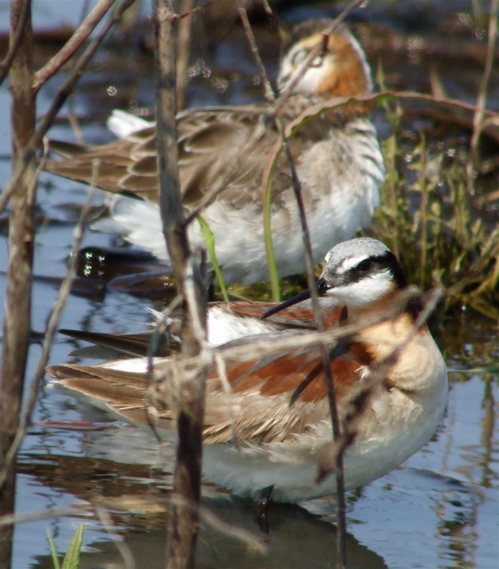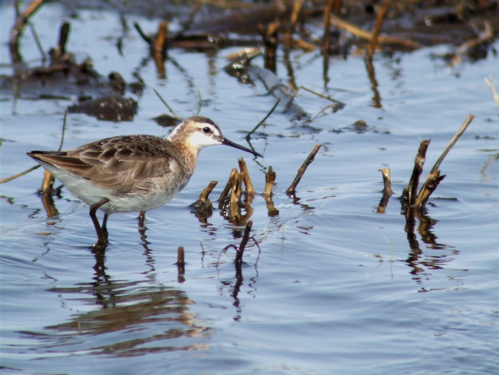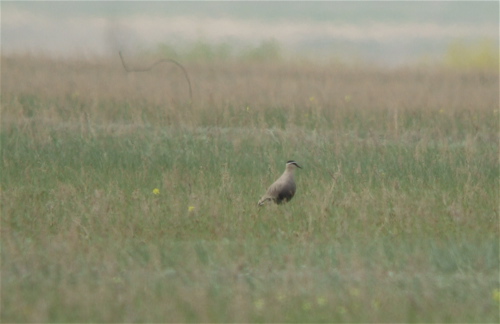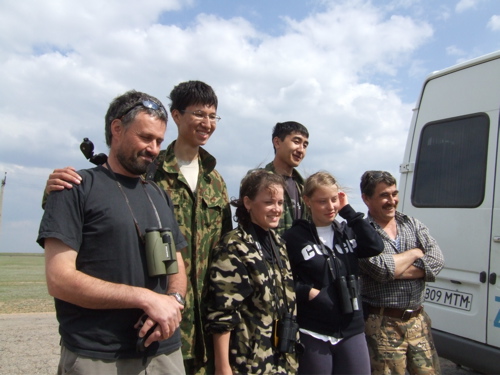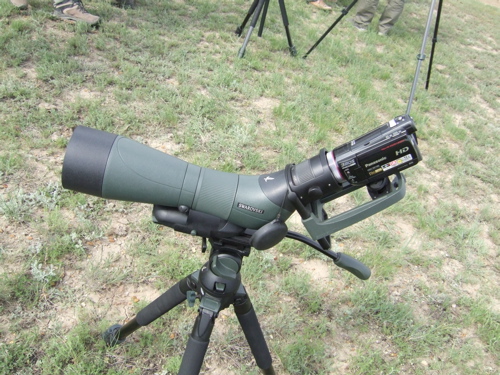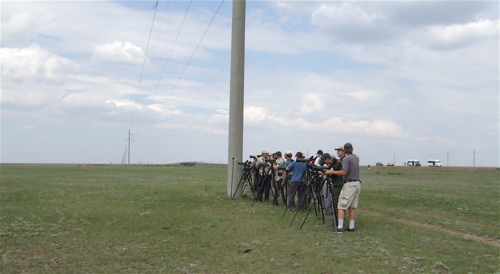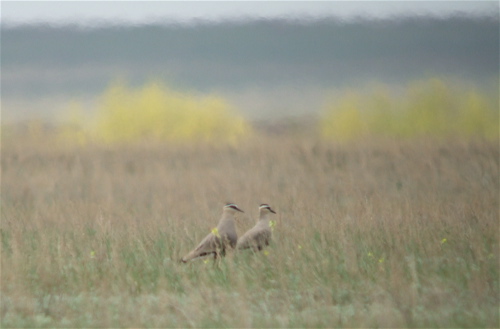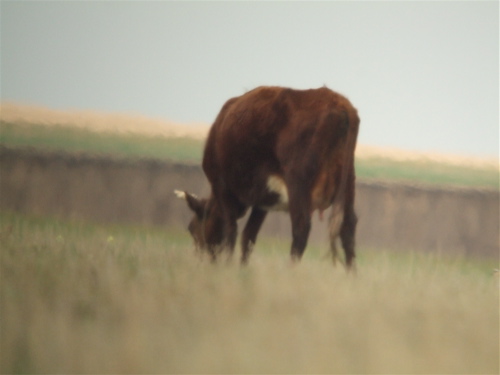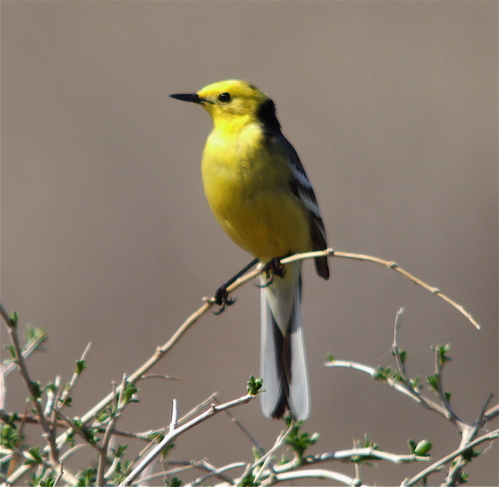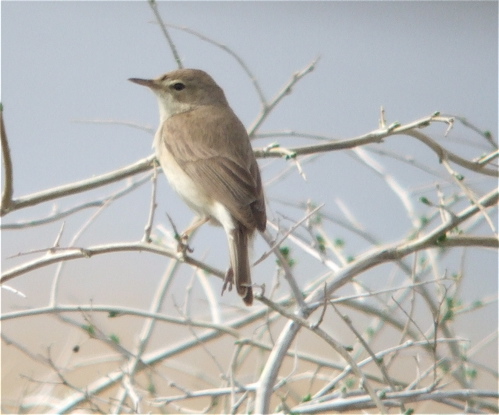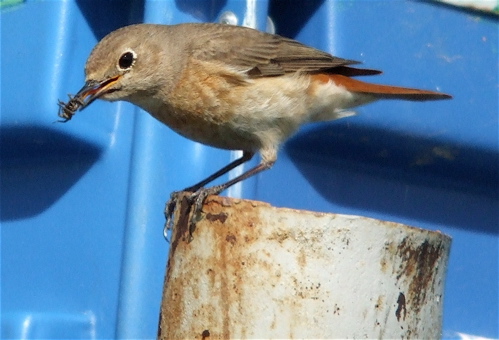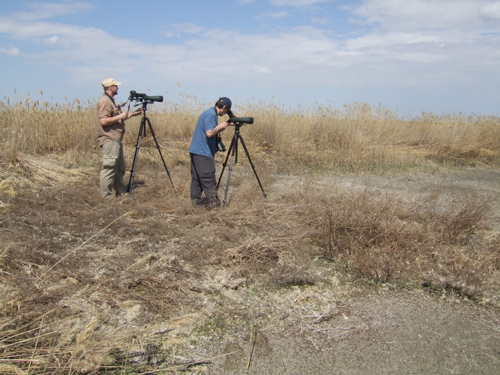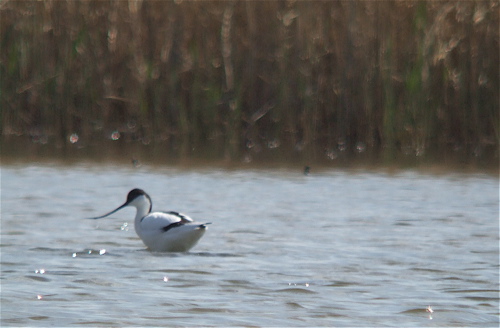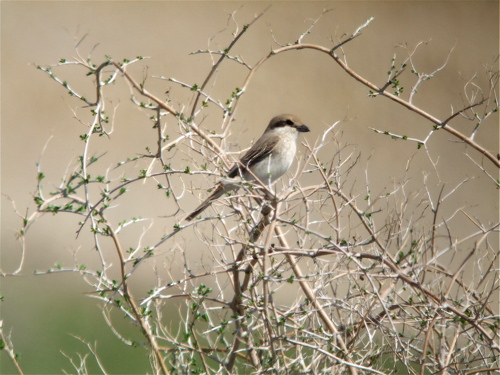If you'd like to read the first part of this leg of our Kazakhstan trip, visit here.
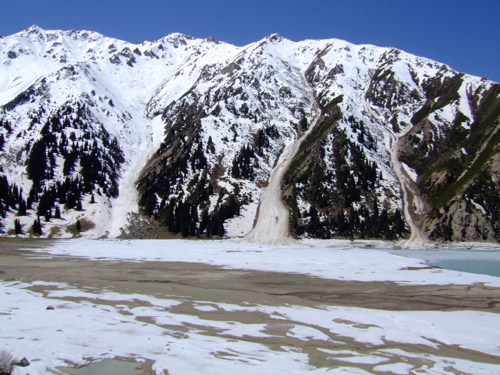
I think the Tien Shan Mountains were my favorite, check it out in the above photo--glaciers! One of the people in our group had been to this area before. He said that his group started earlier than ours and he knew of where we should be and at what time. After we spent the morning enjoying great birds like brown dipper, Eurasian hobby, and Himalayan rubythroats, it was time for lunch. Our guide found a nice clearing in the sun with a great view and not so much snow. However, the other birders wanted to go higher and staged a bit of a mutiny.
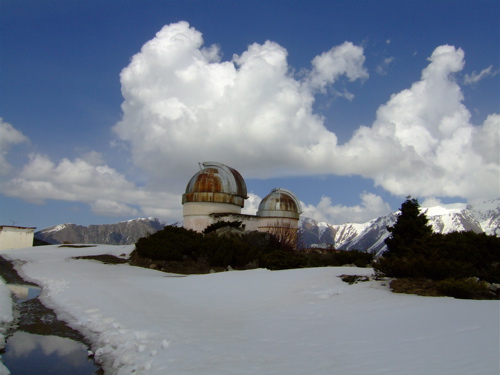
We drove up to a higher elevation that was covered in snow. If you were willing to walk up a very vertical and rocky ledge, you wound up at this abandon research station. And this was where other birds like white-browed tit-warbler. All the birders scattered in various directions. I tried, but there weren't very many clear paths. The few that were there, were covered in very deep water. I opted to walk through the snow and discovered that in some parts, it wen all the way up to my hips. I think I have said it before in the blog and I'll say it again, I have a new appreciation and respect for the REI convertible pants. I stayed fairly warm and the material dried out quickly. It was hard work toting my scope, pack, recently acquired bagged lunch through such deep snow and rather than struggle to keep up with the tenacious long-legged birders in hot pursuit of tit-warblers and accentors, I decided to answer the call of my stomach and eat. I trudged my way to the building's steps.

Above is my provided bag lunch. The food in Kazakhstan was not what I would call exciting--edible, yes. A sensation for the taste buds, not so much. What struck me most was that every single meal (even breakfast) included cucumbers and tomatoes. Usually in the form of a salad with a light dill vinaigrette, but in the bagged lunches, we got a whole tomato and a hunk of cucumber. The above lunch included a boiled potato, apple, hard boiled egg, a chicken thigh with a lot of paprika, and four rolls (one of which reminded me of the female anatomy). Breads were common at meals too. The favorite to eat was a fried bread, kind of like a donut with out the sugar, which is a good way to describe a lot of the Kazak food. At some meals a plate of rice and meat would be in front of you and being fairly close to China, you expected it to be spicy. Not the case, it was quite bland, but if you wanted fuel to keep going, then this food did accomplish that goal.

This was my view during lunch. I could hear several Himalayan snowcocks singing all around me in the crisp mountain air. It was nice to take a break from the birding and just admire the beauty of the remote region I was in. I thought about what I would be doing if I were home, what others were doing. I thought about how huge and beautiful our planet is despite what we hear in the news and how little time any of us have to see it. Sometimes I get to a location and realize that my chances of ever being here again are next to impossible, I want to burn them into my brain. It was already pretty amazing I had made here in this lifetime.
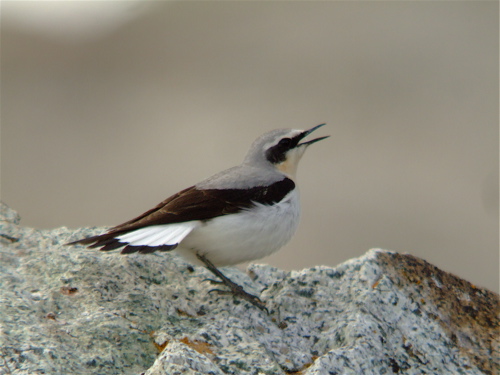
Northern wheatears were all around too. What a treat to see this bird up close! Rarely, one will come down out of Alaska and hit the very northern tips of Minnesota, but never in sleek breeding plumage. And what funny noises they made! This one made sounds like a camera shutter going off. I don't know much about wheatears to know if they are a mimic species. I do know that they make all sorts of crazy sounds, but this one really had my attention. I did manage to get some video with my digiscoping equipment, you may have to crank your volume to hear it:
[youtube]http://www.youtube.com/watch?v=91JBg6ZzJog[/youtube]
My buddy Clay came over and digiscoped it too. He pointed to the mountain side behind the wheatear where we could hear snowcocks chasing each other and said, "See the Batman?
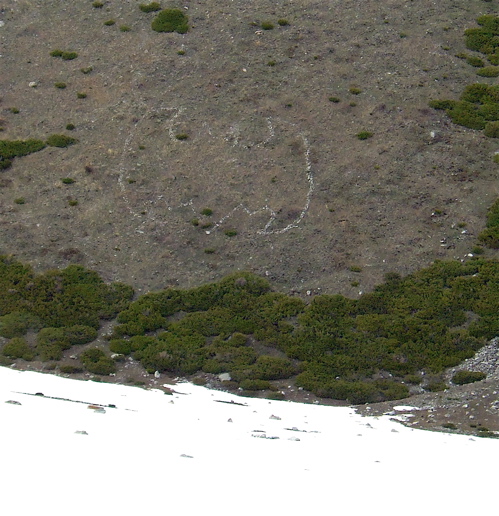
And there it was, the Batman Insignia made of a collection of fairly large mountain rocks. If I had to guess, it was about 40 feet long. Those researchers at the abandon station must have gone pretty darned stir crazy sometimes. I love how I'm in one of the most remote regions on the planet and yet, cannot escape Western culture.

Much to the reluctance of our group, we had to begin the slow decent down the mountains. It was early afternoon and we had to get down to the bottom in time for dinner and for part of our group to leave. I stayed for a couple more days, but most of our group was leaving that night and getting a large group of birders to move, especially in a place where once in a lifetime birds are packed, is no easy feat. Above was one of our target birds called a black-throated accentor. This little bird just refused to perch in better light, but you can see a photo of it here. The higher we went, the less variety we had, but still cool birds nonetheless. I don't think anyone in our group got the tit-warbler, so I do have some excuse to come back.

This was lovely little bird that we saw flitting about called a blue-capped redstart. I'm not sure where the redstart comes from, but at least it had a blue cap.

Magpies were common on the Steppes in Kazakhstan and common in the trees in the mountains.

As the day became later, the light became perfect. We saw less and less snow and our faster pace made us warm up.

Tim Appleton (the guy who started the British Bird Fair) and is one of the most interesting birders I have ever met) came over to us and said, "There's a ruddy shelduck in perfect light for a photo." He was correct, what lovely color this duck was. We had seen them earlier on the lake, but they were very far away, this one was much closer and Tim was correct, in perfect light. It was about this time that I was starting to fade. Kazakhstan is about eleven hours ahead Minnesota and we'd been hitting hotel beds at midnight and getting up by 5am pretty regularly. Fortunately, Corey Finger became my pusher man with his oh so tasty cappuccino caffeine pills--bless that man. They did have some coffee in Kazakhstan but it was more int he form of NesCafe.
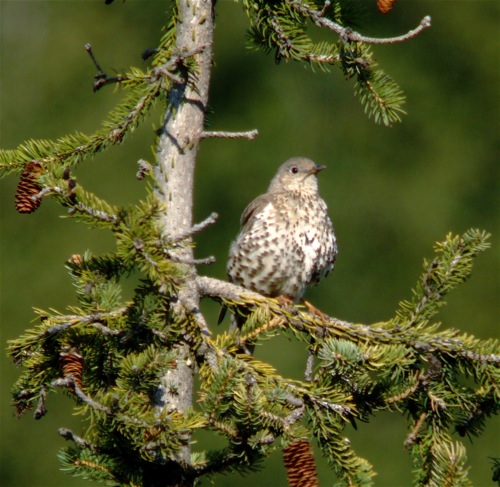
After perking up, I was able to enjoy the birds, like this mistle thrush perched in perfect view taking a preen. You can view a video of this large robin like bird here. We eventually made our way down the mountain, but moving a group of birders is like herding cats, we made it to the restaurant late and many of the people taking flight that night had to change clothes and repack carry on luggage in the parking lot.

The restaurant had all kinds of Kazakh symbols around, even part of a replica of the Independence Monument found in Independence Square in Almaty. The full monument is a golden man holding what I think is supposed to be a golden eagle and the golden man is riding a flying snow leopard. I know the bird is dinky for a golden eagle, but hey, this is a golden man, chances are if a dude is made of gold, he's going to be bigger than your average male. When I told people that I couldn't believe I had the chance to go to Kazakhstan, one of the first reactions was, "No one ever goes there." The truth is that I have always wanted to go, ever since I had read about tours to see Kazakh tribesmen hunt with golden eagles. We didn't get to do that on this trip, but we did see wild ones flying over.

Here is one of the dining rooms at the restaurant. We didn't get this one, our room had chairs, but it's basically the same decor and color in a huge outdoor gazebo. All of our chairs had blankets we could drape over ourselves as the darkness brought with it the cold mountain air.
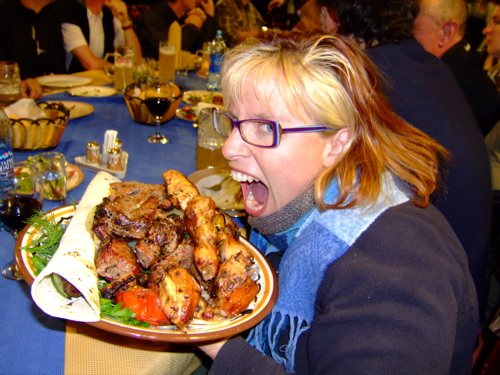
By the time the food arrived, I was so hungry that I could eat a horse, which was fortunate, because that's some of what they served us. They also had chicken, beef, and something tougher that I suspect was goat, but the horse was a surprise. It was mixed in with a cucumber and tomato salad (again with the cucumbers and tomatoes) but it was pleasantly marinated and was quite possibly the tastiest thing I had the whole week (outside of the odd pizza that had no sauce but had carrots as as a topping).

After is was quite dark, one of my favorite bird names dropped in to our gazebo--a great tit. The bird fluttered right over us and began hawking for insects attracted to the light bulb. Clever bird, ignoring the usual convention of roosting at night and taking advantage of an abundant food source.













